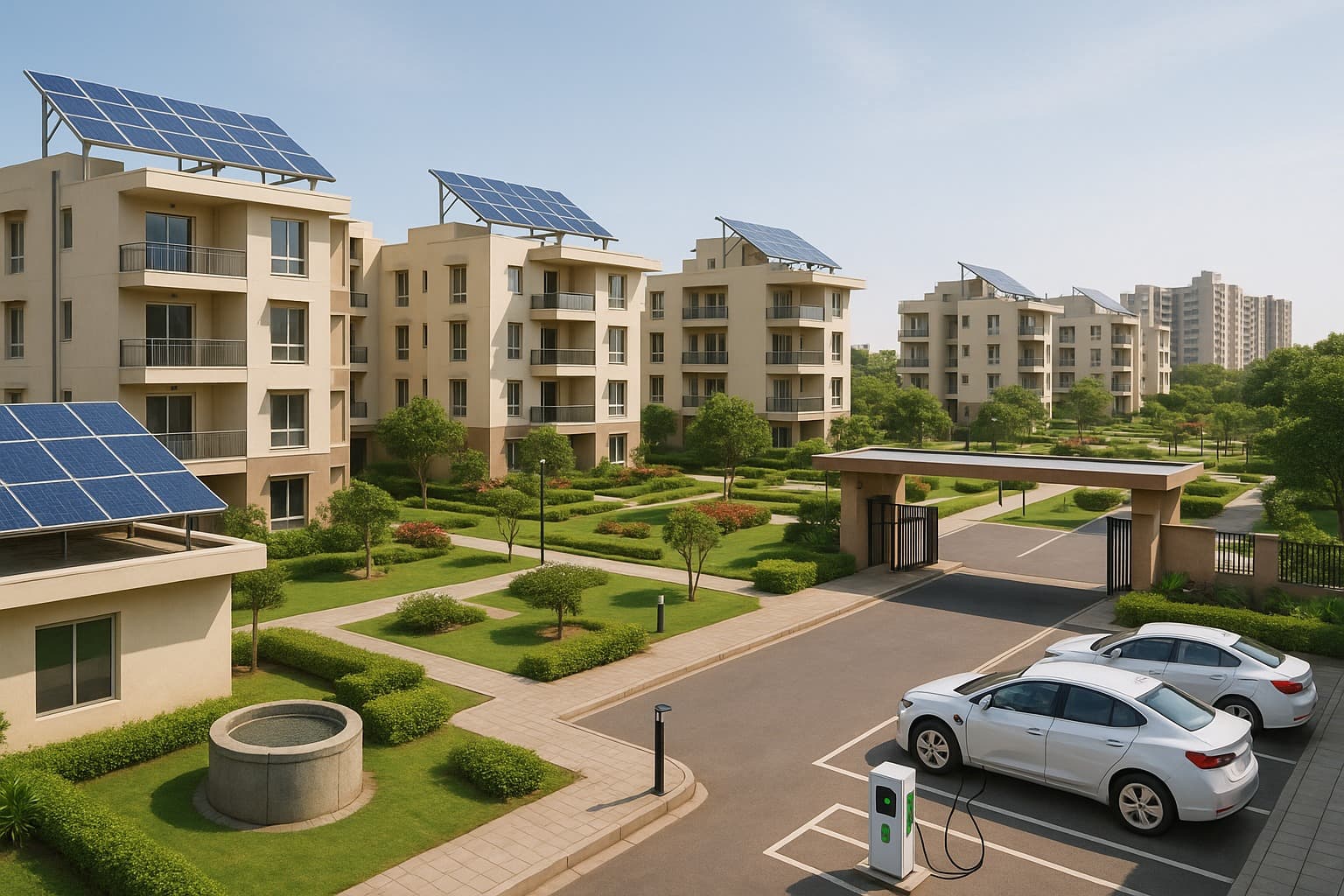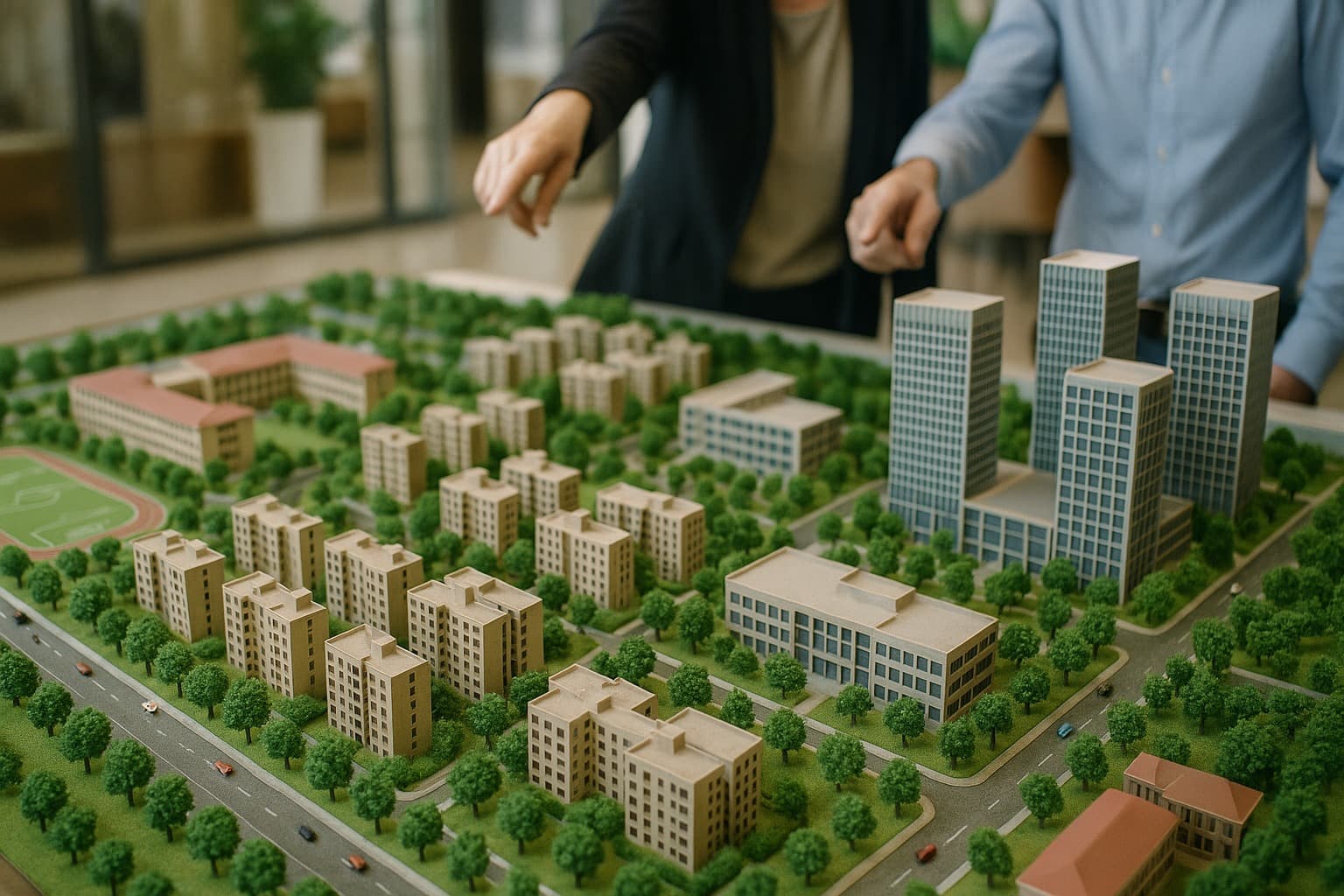The Rise of Mixed-Use Townships in India: A Comprehensive Guide
Summary
Mixed-use townships are revolutionizing Indian real estate by offering integrated communities with housing, offices, and amenities. Driven by convenience and lifestyle shifts, these townships are becoming the preferred choice for homebuyers and investors seeking a better quality of life.

The Rise of Mixed-Use Townships in India
If you ask today’s homebuyer in India what they want, the answer is no longer just “a 2BHK in a good area.” Times have changed. People don’t just want a home; they want a lifestyle, a community, and most importantly, convenience. That’s exactly where mixed-use townships are stepping in to transform the way India lives and works.
From Pune and Mumbai to Bengaluru and Lucknow, township projects in India are rewriting the real estate playbook. Instead of standalone apartments tucked into busy neighborhoods, families are choosing large, integrated communities where housing, offices, retail, healthcare, and education exist in one ecosystem. This isn’t just a housing trend—it’s the foundation of integrated living in India, and it’s growing faster than ever.
Why Mixed-Use Township Projects Are Growing in India
Indian cities are expanding rapidly, but with growth comes chaos—traffic jams, pollution, and the daily grind of commuting long hours for work, school, or even basic shopping. People are tired of it. That’s why real estate townships are gaining momentum.
These projects offer something city life rarely does: order. They bring together homes, commercial spaces, schools, malls, hospitals, and green areas into a single, planned development. In other words, life becomes simpler.
Three reasons explain the growth of mixed-use township projects in India:
Scarcity of Space in Cities: With land running out in central areas, developers are creating larger, self-sufficient projects on the outskirts.

Lifestyle Shift: Millennials and Gen Z are looking beyond just shelter—they want experiences, amenities, and communities.
Work-Life Balance: Hybrid work models mean more people want to live in places where daily needs are nearby, reducing dependence on long commutes.
This is why more families are gravitating toward smart cities projects that offer a sustainable, integrated way of living.
Township Living Benefits in Indian Cities
One of the most common things township residents say is: “We no longer feel the need to step outside.” And that sums up the township living benefits in Indian cities beautifully.
Unmatched Convenience: Whether it’s picking up groceries, seeing a doctor, or dropping kids at school, it all happens within the township.
Safety First: With gated entries, security guards, and CCTV monitoring, families feel protected.
Green Living: Townships usually have more open areas, parks, and gardens compared to standalone projects.
Community Vibe: Residents celebrate festivals together, join sports clubs, and form social groups, creating a sense of belonging.
Value Appreciation: Homes in townships tend to grow in value faster due to high demand and better infrastructure.
These are just some of the benefits of living in township developments in India, which explains why buyers are increasingly favoring them over traditional apartments.
Upcoming Integrated Townships in Metro India
When you look at upcoming integrated townships in metro India, the growth is staggering. Pune, Bengaluru, and Mumbai are leading the charge.
Pune: With IT hubs like Hinjewadi and growing suburbs like Baner and Wakad, the city has become a hotspot for township and mixed-use developments in Pune and Mumbai. Large developers are offering everything from IT parks to international schools within these projects.
Mumbai: With limited space in the main city, developers are expanding into Navi Mumbai, Panvel, and Thane, creating massive mixed-use projects designed for the next generation of homebuyers.
Bengaluru: Townships near Whitefield and North Bengaluru are emerging as preferred choices for IT professionals who want work and life balanced in one place.
Even tier-2 cities are catching up fast. Places like Lucknow, Jaipur, and Kochi are seeing township launches, marking the rise of township culture in Indian metro and tier-2 cities.
Demand for Township Projects in 2025
The demand for township projects in 2025 is only set to soar. With urban congestion rising and buyers becoming more quality-conscious, integrated communities are being seen not just as housing, but as long-term investments.
Interestingly, NRIs are also eyeing these developments, considering them among the best township projects for property buyers in India 2025. For NRIs, these projects offer two assurances: world-class standards and higher ROI. For Indian families, they represent a better quality of life—safer, more convenient, and more future-ready.
Future of Mixed-Use Integrated Living Spaces in Indian Real Estate
The future of mixed-use integrated living spaces in Indian real estate isn’t just about bigger projects—it’s about smarter ones. Developers are blending technology, sustainability, and lifestyle into every township.
Imagine walking into your home and controlling lights and appliances through your phone. Picture solar power driving your building, rainwater harvesting reducing waste, and co-working spaces within the same complex. That’s the reality being created in today’s integrated living in India.

Soon, townships won’t be just an option—they’ll be the default choice for homebuyers.
Why Townships Are Outshining Standalone Apartments
At the heart of the rise of mixed-use township projects in India is one simple truth: they offer more. A standalone apartment might give you four walls, but a township gives you an entire ecosystem.
For parents, it’s about safety and good schools nearby. For young professionals, it’s about saving time. For senior citizens, it’s about healthcare access and community bonding. And for investors, it’s about future-proofing their money.
That’s why townships are not just growing—they’re redefining Indian real estate.
Conclusion
The journey of Indian real estate is undergoing a powerful transformation. Why mixed-use township projects are growing in India is rooted in the lifestyle shift of a new generation of homebuyers who want more than just shelter.
For families, the benefits of living in township developments in India go far beyond convenience—they bring together safety, belonging, and a better way of life. For investors, the best township projects for property buyers in India 2025 promise steady appreciation. And for cities, they represent the future—structured growth, sustainability, and smarter communities.
The rise of township culture in Indian metro and tier-2 cities is not just a trend—it’s the future of how India will live. Integrated, convenient, and community-driven, these developments are here to stay, shaping the urban landscape for decades to come.
Summary (100 words)
Mixed-use townships are fast becoming the backbone of Indian real estate. Buyers today want more than just homes—they want communities with schools, healthcare, retail, and offices within one ecosystem. The growth of mixed-use township projects in India is being fueled by urban congestion, lifestyle changes, and demand for safer, more convenient living. Cities like Pune, Mumbai, and Bengaluru, along with tier-2 hubs, are witnessing the rise of township culture. For families, the benefits of living in township developments in India are immense, while investors see them as future-proof assets. Clearly, integrated townships are shaping the future of urban India.
